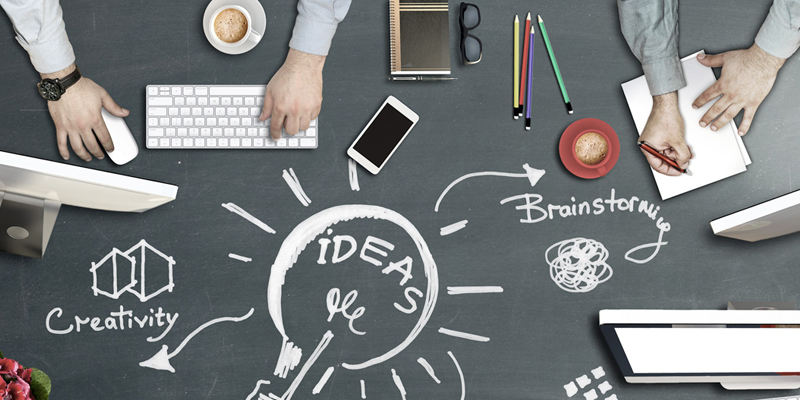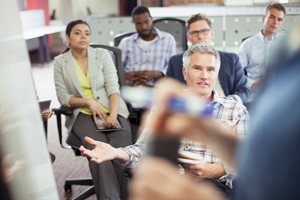DEMYSTIFYING EXPERIENCE DESIGN
That idea for that perfect product that is going to solve common day-to-day problems is amazing. People are excited about it and the buzz is palpable. However, there is one lingering question – how will users actually experience it?
How will this idea change their day-to-day now that the problem is fixed? Will users react positively to having their routine changed or will they bristle at the change, even though it’s clear that the changes are positive?
Knowing how users will truly interact and experience an idea is at the core of experience design. We get a lot of questions about experience design and why it sets us apart from other companies out there. Admittedly, we can understand the confusion about this key cornerstone to innovation – a simple Google search returns pages of confusing articles about one of our core principles.
And this is exactly why we’re talking about experience design: what it is, how it happens, why it matters, and some examples of how it is making a difference. Now, when you get asked by your boss why it is you need a team that lives and breathes experience design to take your idea to the next level – send her this article (better yet, share it on your Facebook page so you can help us take the mystery out of experience design).
Experience Design: What It Is
For the Radius team, experience design is encapsulated by this company-wide understanding:
Your customers are more demanding than ever. To grow, you need to target your sight beyond what is needed today, to understand unarticulated needs and emotionally link your brands to your users. We can help you deliver a better brand and user experience for your customers, creating products, and systems that optimize function, value, and appearance.
This essentially comes down to really knowing your users. First, we get to know you by digging deep into your idea, with the goal being of uncovering unexpected opportunities, challenges, barriers, and room for growth. Knowing more about your idea then allows us to ask the right questions about your users and their experiences: both current experience and your planned for experience
Experience Design: How We Do It
Good human factors and experience design experts ask questions and hope for answers.
We are more than good – we are experts at human factors and experience design. The Radius approach to experience design pushes and breaks boundaries to discover what it is your idea will ultimately do to your users.
Good or bad. We need to know – do your users want it? Do they care about it? Is this a real problem you’re solving or is it a problem you created to support your idea? How will your users react to this change (remember, not everyone in your market responds well to change)? Are you ahead of the game and bringing this idea to market too early? Or are you behind and simply trying to catch up? How and why are you wowing your users and is this wow-effect a one-time moment or is it an instant connection that allows everyone to grow and flourish?
It’s this kind of thinking that separates us from the good. To be the best in innovation and ideation, you need to step outside your comfort zone and be ready to have your emotions, beliefs, and attachments prodded, pushed, and bent. This is what we do for you.
We immerse ourselves in your user’s experience and see things from their perspective. By using tools such as cognitive walkthroughs, user journeys, risk analysis, experimental design, wireframes, rapid prototyping, and usability testing, – we see and understand the way your users do.
This process allows us to look beyond the physical and digital to learn about the emotional reactions and attachments your users have to the problem you’re trying to solve. What we learn always surprises us – we don’t enter this relationship with any preconceived ideas about what the user wants.
With an open mind, we ask, listen, respond, and innovate.
Experience Design: Why It Matters
In one word: tension. This is what happens when your user buys your product and it doesn’t live up to expectations. Your user really wants your product to solve their problem and satisfy their needs. In fact, they’ll likely try repeatedly to get your product to work and fit into their day-to-day. And when it doesn’t, your user is frustrated and disappointed, eventually rejecting your product and brand.
You had the best of intentions – deliver a product that would solve a problem. You told your users that this is what you would do. And then you didn’t. This is how you get to that horrible place in the customer relationship: tension and broken promises.
This is why experience design matters. Experience design, when done right identifies the tension triggers and prevents you from ruining the relationship. Eliminate tension, deliver on your promises, give users what they really need, and make the day-to-day better.
Experience design does this and more. Delight your users. Give your users an experience they want. Manage this change and innovation so that your users are open and ready for your idea.
The Radius Effect: Discovery, Design, Development, and Delivery
Innovation is the thread that binds the Radius team together. It’s what makes us excited to get to the office and start working. We are the lucky ones – we get to be in on the ground floor of some of the most innovative and leading products on the market today. Yes, we really are living the dream.
We help our clients (you) make life better for others. Browse our work portfolio to see how we’re helping make your day-to-day better.
Let us help you solve the right problem the right way with the right approach.
RELATED CONTENT
RELATED EXPERTISE
RELATED INSIGHTS
RELATED PROJECT WORK
RELATED CAPABILITIES
WANT TO LEARN MORE?
Start a conversation with Radius to learn how we can help you take your Healthcare project to the next level.




